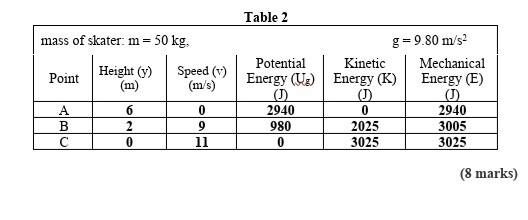When we delve into the realm of physics, the principle of energy conservation emerges as a cornerstone of our understanding of the natural world. To grasp the question, “Is energy always conserved in collisions?” we must navigate through the different types of collisions and the laws that govern them. Imagine energy as a flowing river—sometimes it swirls in tight eddies, becoming turbulent, while at other times it flows smoothly, manifesting as tranquil currents. This metaphor encapsulates the behavior of energy during collisions, illustrating the duality of its conservation and transformation.
The foundation of this discussion lies in distinguishing between elastic and inelastic collisions. In an elastic collision, two objects collide and then rebound off each other, like two perfectly elastic balls bouncing without losing any energy. Here lies a fascinating truth: the total kinetic energy of the system before the collision equals the total kinetic energy after the event. This idealized scenario is akin to a perfectly balanced scale, where nothing is lost, and the energy merely shifts form, maintaining its overall quantity.
On the other hand, inelastic collisions introduce an essential wrinkle in this narrative. When two objects collide inelastically, they crumple together and move as one mass post-collision. In this scenario, kinetic energy is not conserved; rather, it dissipates. Picture a car colliding with a wall—while the wall may stand firm, the car’s crumpled metal signifies energy transformed into heat, sound, and deformation. Here lies the heart of the matter: energy is still conserved in total, but its form may be altered, veering off into realms not visible in pure kinetic terms.
The principle that governs this behavior can be encapsulated in the conservation of momentum. Just as rheostats stabilize fluctuating currents in electrical circuits, momentum acts to preserve the linearity of motion in collisions. The total momentum before the collision equals the total momentum after the event. This consistency provides a reliable framework for analyzing both elastic and inelastic collisions, even when kinetic energy may falter.
Moreover, when we expand our view to three-dimensional space, the intricacies of collisions become even more captivating. Consider an instance of billiard balls colliding on a pool table. Each ball moves in a specific vector, and when they collide, their trajectories change directions—a mesmerizing dance of energy exchange. In this case, one observes not just the transformation of kinetic energy, but also the angular momentum coming into play. The interplay of various forms of energy—kinetic, potential, and thermal—offers a holistic view, demonstrating that energy contributions flow like an orchestra, each instrument playing its role in the grand symphony of physics.
As we reflect on the broader implications of conservation in collisions, fascinating phenomena, such as heat generation and sound, become indispensable factors in our calculations. In an inelastic collision, the kinetic energy that seems to vanish doesn’t disappear into oblivion; it transmutes into other forms, contributing to the overall entropy of the universe. This reinforces the second law of thermodynamics—the inevitable march towards disorder, where energy disperses and spreads into less useful forms. Like cooling embers in a fire, energy quietly transitions, emphasizing both its conservation and its inevitability to alter its state.
Moreover, special relativity introduces us to the concept that energy and mass are not discrete entities but intertwined facets of the same coin, encapsulated in the famous equation (E=mc^2). This insight broadens our understanding, revealing that in high-speed scenarios, such as particles colliding in accelerators, the kinetic energy can be converted to mass and vice versa, illustrating the malleability of energy forms in realms transcending classical physics. The epic dance of subatomic particles showcases a microcosm where energy is conserved like a sacred trust, constantly reshaping into novel manifestations.
Understanding whether energy is truly conserved in collisions invites deeper reflection on how we interpret energy in our daily lives. The choices we make in energy consumption and conservation have very real implications for our environment. Just as energy transforms within the constraints of collisions on a subatomic level, humans too have the capacity to modify the energy landscape. Each action, each decision—from supporting renewable energy initiatives to adopting energy-efficient technologies—resonates in the grand symphony of conservation. The metaphorical river of energy flows through our hands, shaping our planet’s future.
In conclusion, energy is always conserved in interactions, yet its manifestations may vary dramatically depending on the circumstances. Understanding collisions—both elastic and inelastic—offers profound insights into the fundamental laws governing our universe. Each collision is a narrative of energy’s adaptability, a symphony conducted by the laws of physics. As we engage with this reality, recognizing our role in the energetic tapestry of life becomes even more critical. Embracing sustainable practices ensures that the energy we steward today does not become a lost echo in the cacophony of tomorrow’s choices.








